A thread is a basis of creating a new fabric, the essence of construction and structure. This week I was making friends with a lot of different yearns, threads, strings and ropes, you name it!
Hand in hand to construction of continuous thread goes knitting, crochet, weaving and darning.
I have not done knitting or crochet much. Probably last time I had my hands on it was in high school. Which in my case is a long time ago. Therefore, I did not complicate my samples. It was more learning than creating.
These techniques are typically considered to be outdated and old fashioned. Don’t get fooled!
Whilst researching I came across to so many brilliant examples how these crafts are applied in modern fashion:
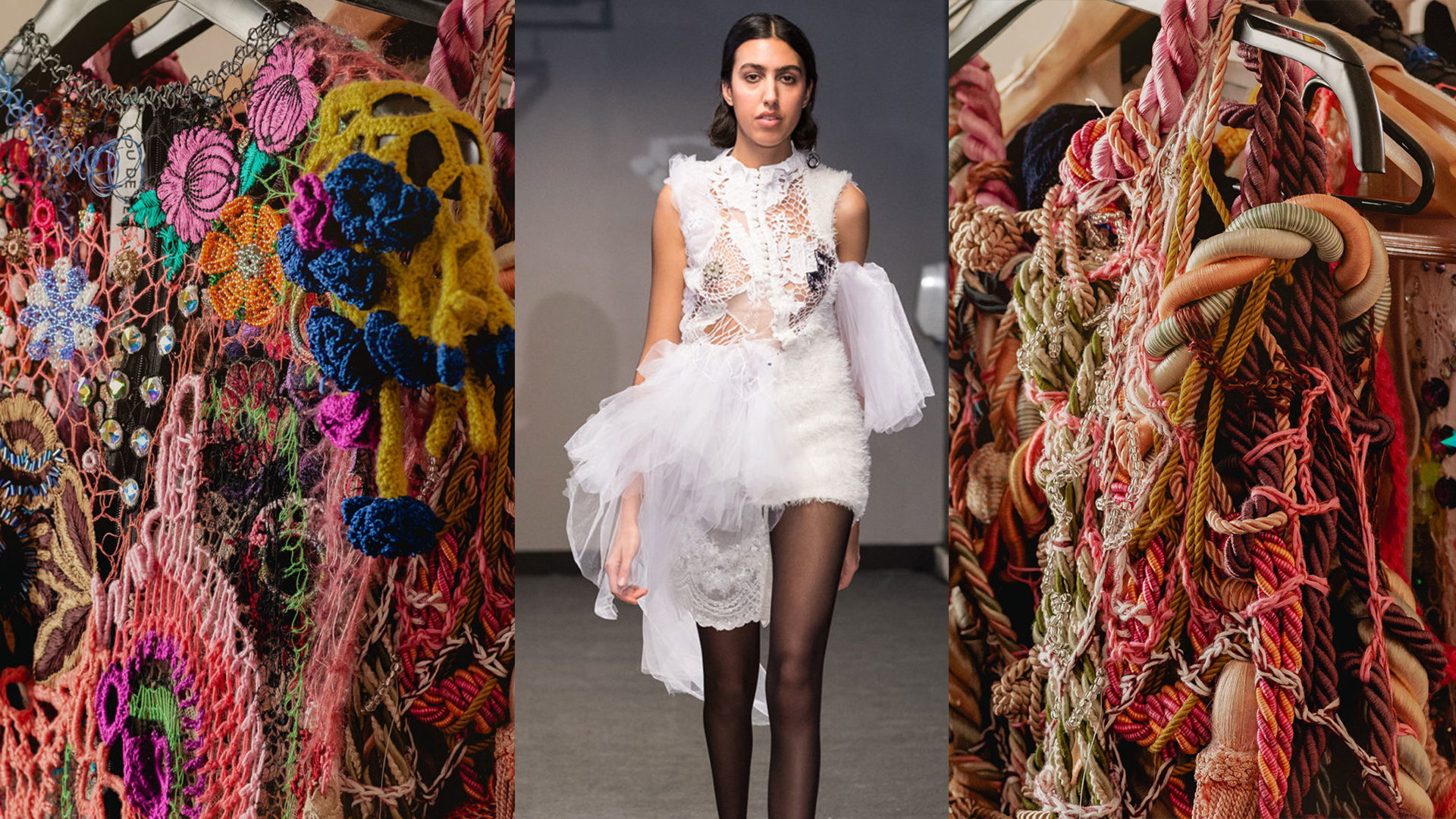 Perfect example is Odély Teboul! A master of crochet. Bringing traditional crafts into French high fashion. Placing crochet in a modern context – uses the method in a contemporary and relevant way. All pieces are completely hand made.
Perfect example is Odély Teboul! A master of crochet. Bringing traditional crafts into French high fashion. Placing crochet in a modern context – uses the method in a contemporary and relevant way. All pieces are completely hand made.
I love her work. My only hope is that at some point I can be able to master the technique well enough to be able to control it in a similar way.
You can read more about designers here: https://www.freundevonfreunden.com/interviews/berlin-odely-teboul/
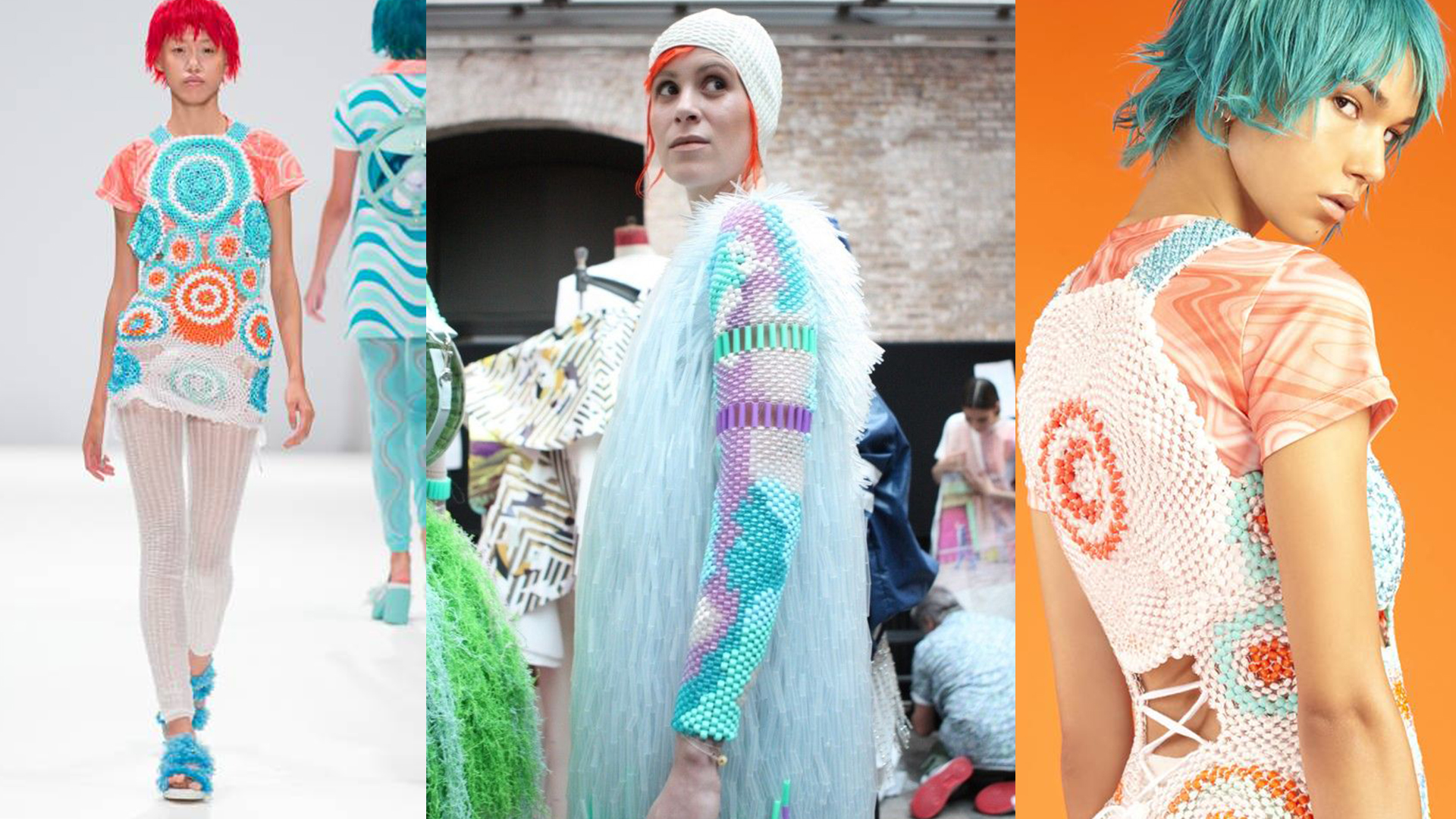 Would you look at that! Cassandra Verity Green London based fashion designer, mostly working with knit and accessories. Pushing knit to the limits. In fact seems there are no limits for Cassandra’s creativity.
Would you look at that! Cassandra Verity Green London based fashion designer, mostly working with knit and accessories. Pushing knit to the limits. In fact seems there are no limits for Cassandra’s creativity.
Another great example that knit doesn’t finish with yarn or classic stitches. It can be so modern!
Some other great examples of modern knitting here: https://knitthefuture.tumblr.com=
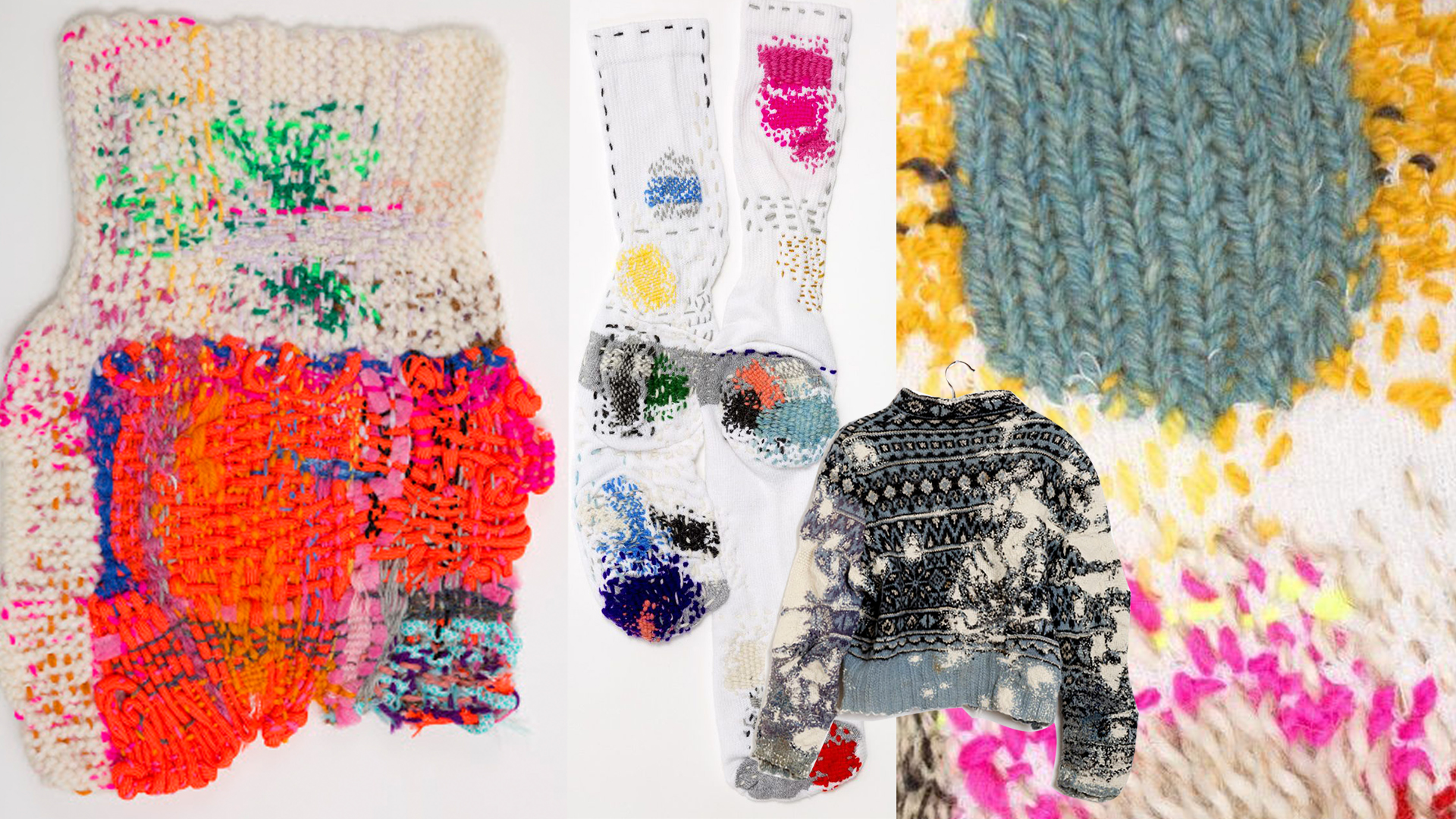
More traditional but same time modern approach to darning from Celia Pym. Visible darning. Showing the imprints of the wearer. So expressive, colour and stitch wise. Bring on the mix media!
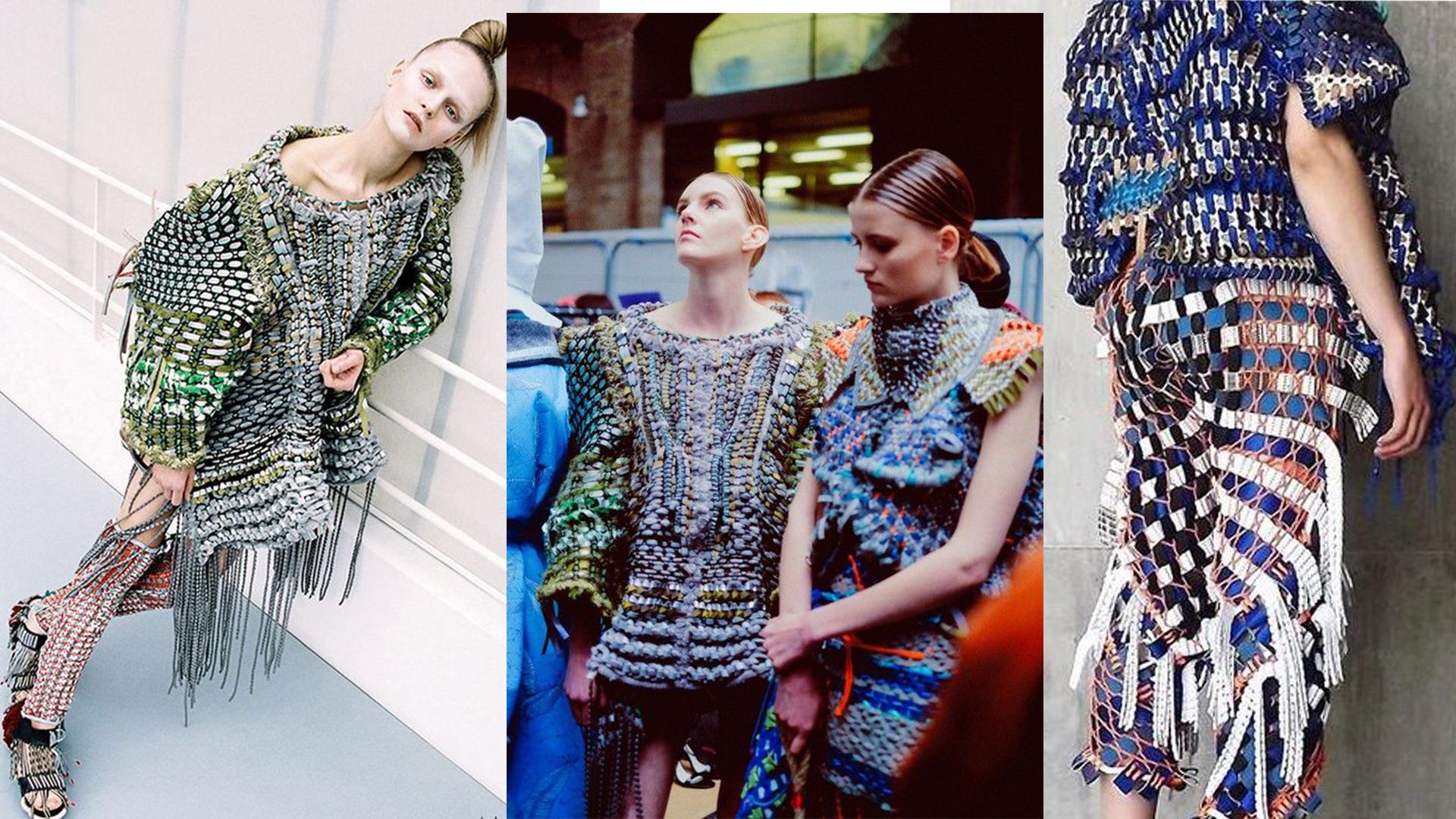
Quoi Alexander’s final (graduating Central Saint Martins) all-woven collection. Really inspiring, screaming about sustainability and the conscious use of fabric . I love the way he constructs the garments, so intricate and confident.
As well, it seems that interacting with these, would be an interesting tactile experience.
You can read about designers work and sustainable view of fashion here: https://nowfashion.com/quoi-alexander-a-designer-on-a-un-mission-28846
Okay, let’s see how did I get on.
 Sample I. Crochet. My first try with the crochet hook. I did half treble pattern. Used the yarn found in the started pack received from my teacher Lindy. Felt like its made from wool. Used 5.5 mm crochet hook. The sample does not really represent the data that I gather for the project. It was more of a first trial, to see if I remember anything about crochet. It was not that challenging. Let’s take it forward!
Sample I. Crochet. My first try with the crochet hook. I did half treble pattern. Used the yarn found in the started pack received from my teacher Lindy. Felt like its made from wool. Used 5.5 mm crochet hook. The sample does not really represent the data that I gather for the project. It was more of a first trial, to see if I remember anything about crochet. It was not that challenging. Let’s take it forward!
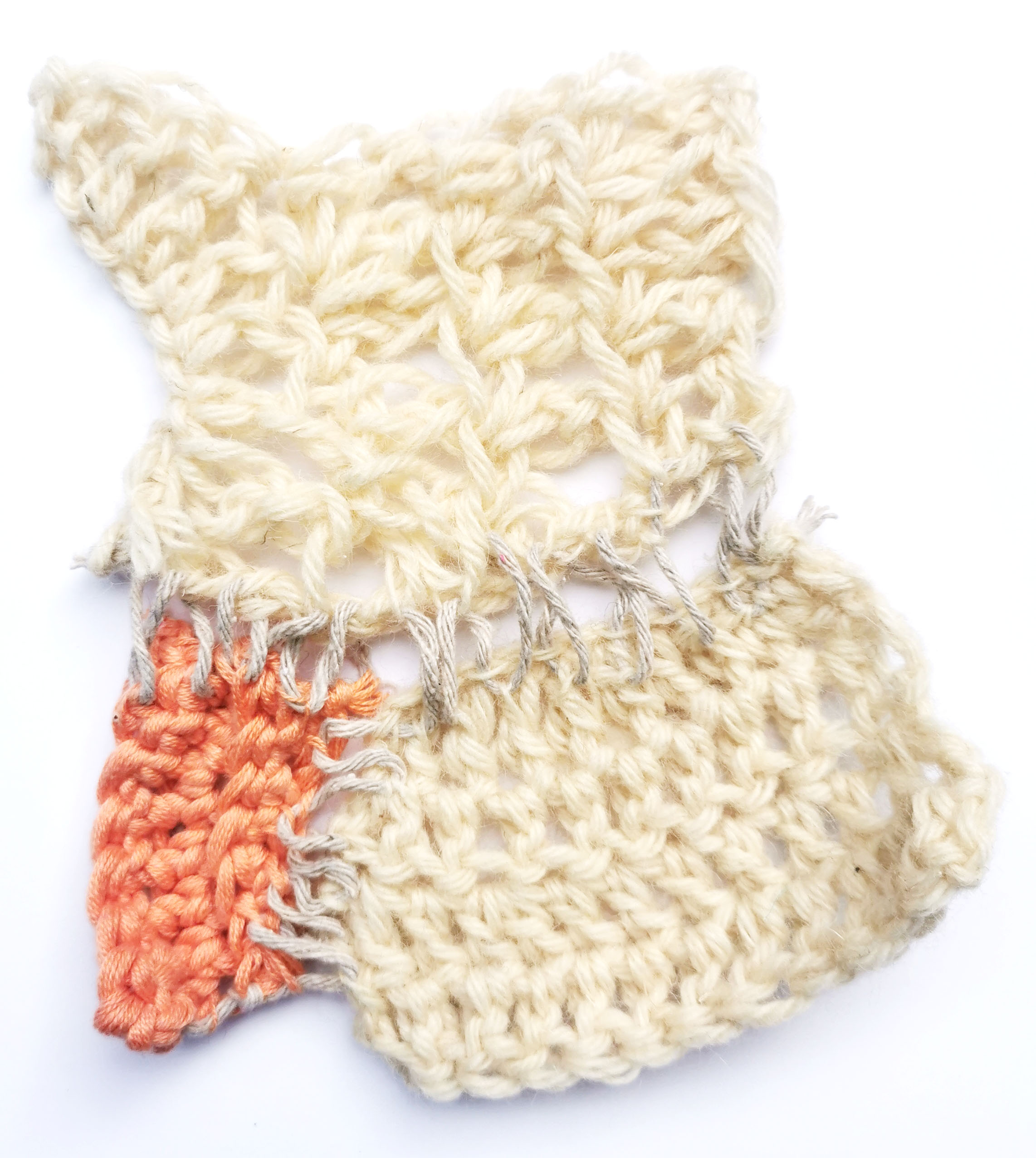 Samle II. Crochet. Three pieces are joined together. It represents a fragment of the music that one of my friends composed out off the pentatonic scale. Notes – CGAAC Two white parts are made using same woollen yarn and same stitch – treble. Yet I used different tension in each part. Loose stitch – C scale higher octave and tight stitch – lower octave. C is the predominant note in C major pentatonic scale, therefore the part representing it are larger in size. Pink represents note A and is double treble stitch since A was mentioned twice. Grey is the note G, the joining one. I used a cotton string to join three small samples. All samples are made using 5.5 mm crochet hook.
Samle II. Crochet. Three pieces are joined together. It represents a fragment of the music that one of my friends composed out off the pentatonic scale. Notes – CGAAC Two white parts are made using same woollen yarn and same stitch – treble. Yet I used different tension in each part. Loose stitch – C scale higher octave and tight stitch – lower octave. C is the predominant note in C major pentatonic scale, therefore the part representing it are larger in size. Pink represents note A and is double treble stitch since A was mentioned twice. Grey is the note G, the joining one. I used a cotton string to join three small samples. All samples are made using 5.5 mm crochet hook.
I like the feel of the sample. Even tho the woollen yarn is pretty rough, the pink one is soft and elastic feel a little like jersey. It gives a good balance. As well as the joining string gives needed flexibility.
 Sample III. Crochet. After more or less learning three stitches I started to experiment. I changed my hook to 3.5 mm. As well explored different weights of yarn. The grey yarn is actually fine embroidery mouliné satin thread and the white one is much heavier string which came in the started pack. I did not follow any stitches here, I mixed up all three that I learned before. Working with the fine thread was time consuming and quite challenging because it was very slippery and hard to control. Same challenging was the white string. Due to its make, it was impossible to follow any particular stitches, it all just tangled together. Regardless I really like the results. I never get upset of any mistakes, because usually they can be used for good purposes. At this occasion, the white string gave an effect of almost solid fabric and ended up looking great next to really light, net-like crochet piece made from grey thread.
Sample III. Crochet. After more or less learning three stitches I started to experiment. I changed my hook to 3.5 mm. As well explored different weights of yarn. The grey yarn is actually fine embroidery mouliné satin thread and the white one is much heavier string which came in the started pack. I did not follow any stitches here, I mixed up all three that I learned before. Working with the fine thread was time consuming and quite challenging because it was very slippery and hard to control. Same challenging was the white string. Due to its make, it was impossible to follow any particular stitches, it all just tangled together. Regardless I really like the results. I never get upset of any mistakes, because usually they can be used for good purposes. At this occasion, the white string gave an effect of almost solid fabric and ended up looking great next to really light, net-like crochet piece made from grey thread.
The sample represents the transition from higher musical note (light structure) into to the lower (heavier structure).
 Sample IV. Crochet. From the beginning of this week I was afraid of the process of how to merge two threads in one piece. It seemed pretty impossible, considering my non-existing skills in crochet or knit. At the end it was not as hard as I thought. I used string-like grey yarn, merged with two coloured as it seemed (I am not very good in distinguishing) cotton yarn. 5.5 mm crochet hook was what I used. Again, I didn’t want to work with only one stitch, therefore I did all the ones I learned in one piece, in order to get more of a messy result. The touch is really flexible and soft, pleasing.
Sample IV. Crochet. From the beginning of this week I was afraid of the process of how to merge two threads in one piece. It seemed pretty impossible, considering my non-existing skills in crochet or knit. At the end it was not as hard as I thought. I used string-like grey yarn, merged with two coloured as it seemed (I am not very good in distinguishing) cotton yarn. 5.5 mm crochet hook was what I used. Again, I didn’t want to work with only one stitch, therefore I did all the ones I learned in one piece, in order to get more of a messy result. The touch is really flexible and soft, pleasing.
It represents one of my first design studies – the alignment of musical notes on the partiture.

Sample VI. Knit. I did a simple knit stitch. I chose really soft yarns. It was easy working with them. After doing my crochet sample using the pink yarn I could not resist from using it again. It is so flexible and pleasant to handle. The knitting needles used were number 9, so quite thin, a little too thin for the yarn, but I was going for a quite tight structure. Here I learned how to merge two yarns together, two colours. It was very alike as using the crochet hook. The same as the sample just above, this one is also representing the alignment of musical notes on the partiture. The notes are – CEAEC.
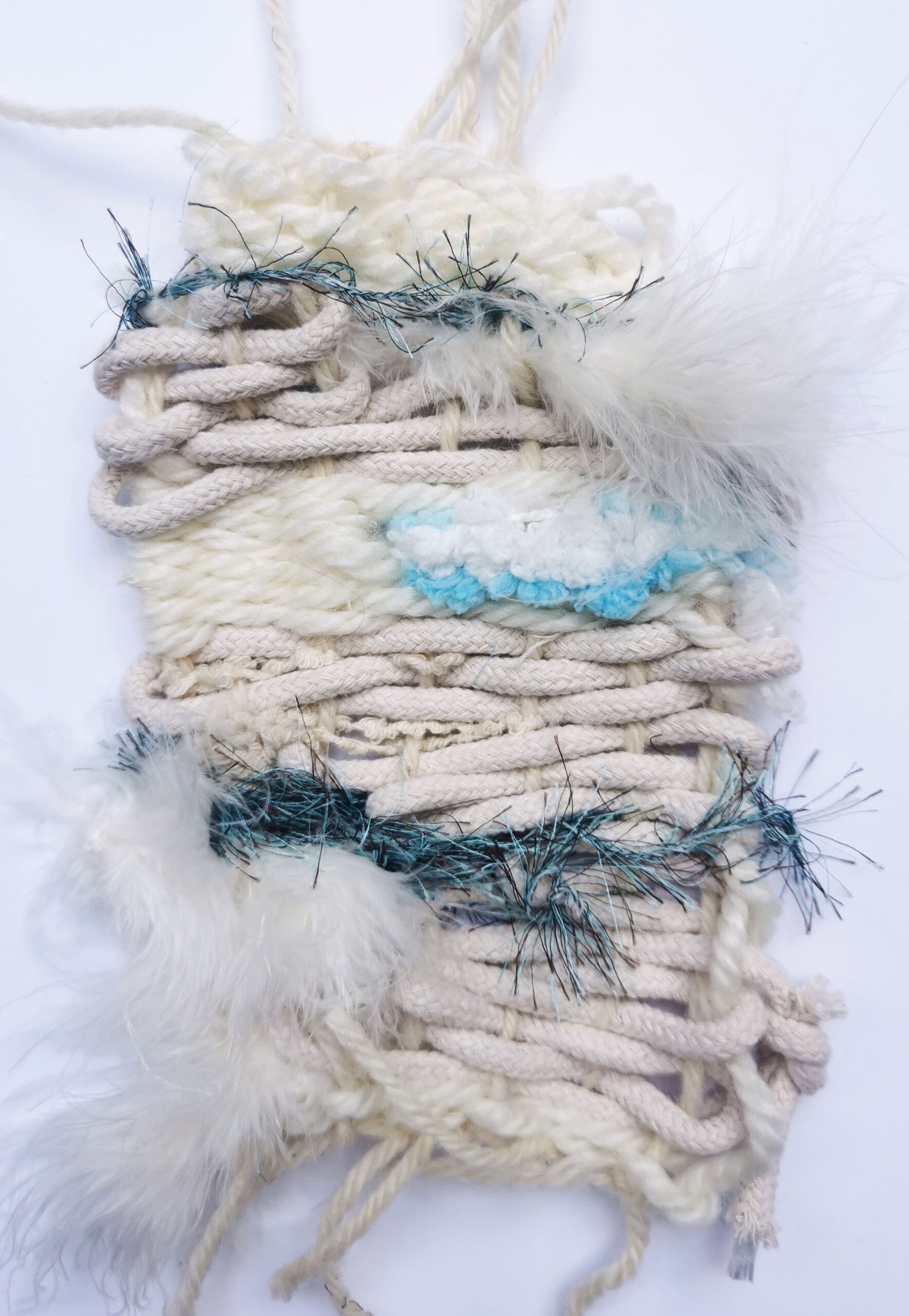 Sample VII. Weave. I used satin yarn, feather string, thick cotton cord, and some strings from the starter pack, which suited to my colour palette. Weaving probably the most pleasant of all of these techniques. Mostly because I was more in control of it, as well as I was able to use a lot more of materials that I had sourced at home. Moreover, while weaving I was able to represent the gathered data the most accurate. The sample is quite chunky yet malleable, stretchy. Even tho the materials used were very different, they seem to be working very well together. Praise the experimentation!
Sample VII. Weave. I used satin yarn, feather string, thick cotton cord, and some strings from the starter pack, which suited to my colour palette. Weaving probably the most pleasant of all of these techniques. Mostly because I was more in control of it, as well as I was able to use a lot more of materials that I had sourced at home. Moreover, while weaving I was able to represent the gathered data the most accurate. The sample is quite chunky yet malleable, stretchy. Even tho the materials used were very different, they seem to be working very well together. Praise the experimentation!
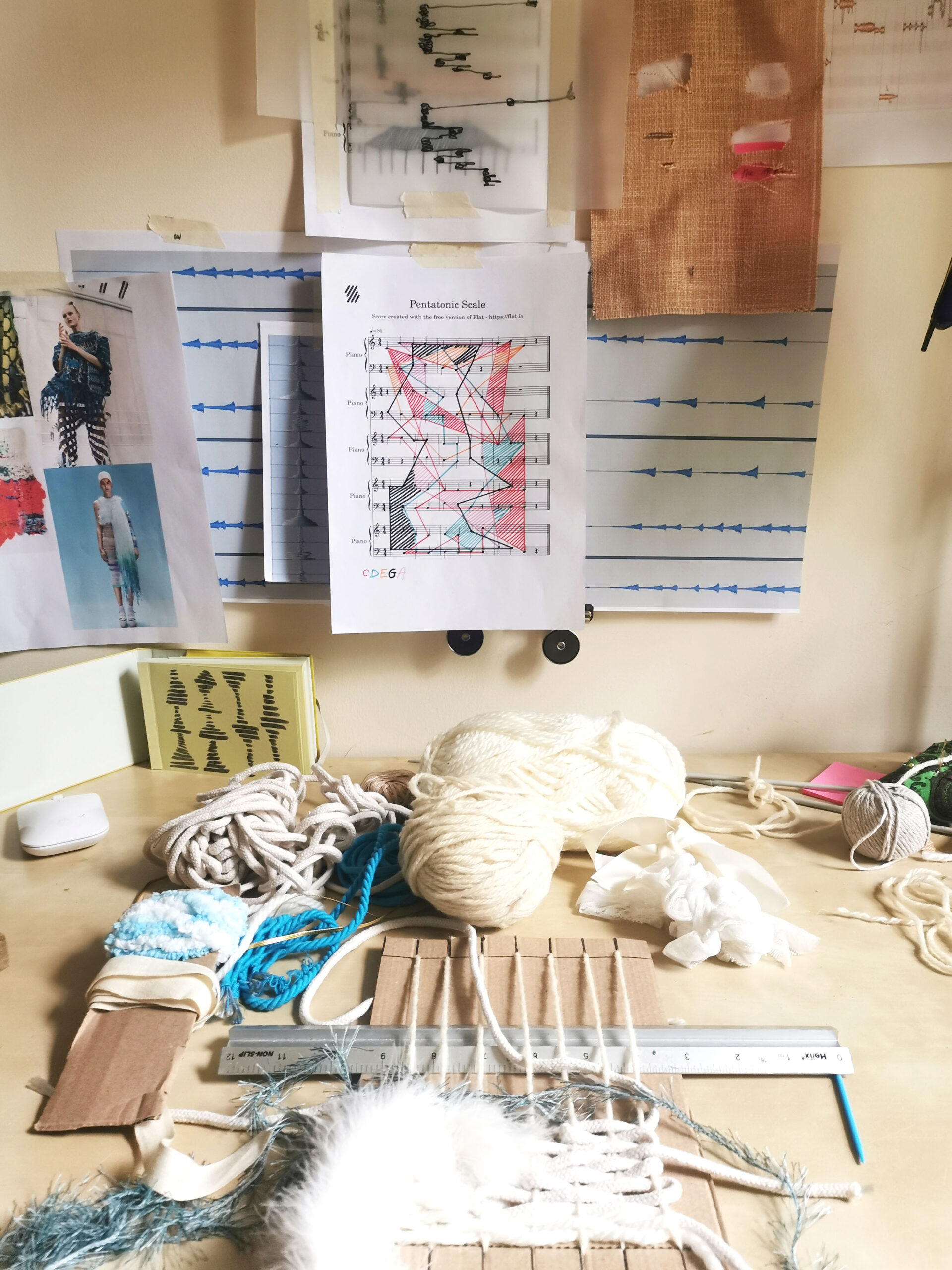 Weaving from the design studies using mixed media. I made a loom from cardboard.
Weaving from the design studies using mixed media. I made a loom from cardboard.
It was quite an interesting week. At the beginning I was assuming I will be struggling quite a bit with the completely new techniques. At some point or another I was, but I think I developed new ideas and discovered new ways that yarn can behave. Most pleasant were tactile experiences, and surprises when different materials worked as one unit.
There is so much more to explore here.

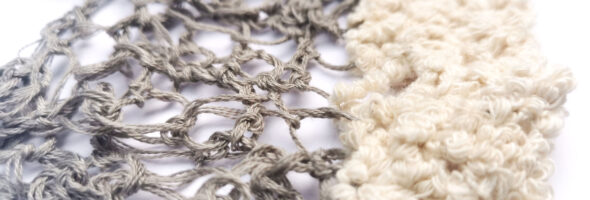


Your layout in this post is working so well. The large introductory image sets the scene.
the post is very well paces and takes the reader through your exploration clearly. Despite learning all these new techniques you have not lost sight of your theme which is driving your experimentation really creatively. The next step is to exploit what you have discovered through your initial experiments. Make sure that you carefully flle all of your samples with notes so that you can return to these in the future.
Your description of texture and properties of the yarns is particularly striking throughout. Would you consider doing some very short video clips where you show the moving sample to helps describe the flexibility, solidity etc?
I am happy to try to identify some of the yarns you have been using from the starter pack too.
Great post, well done.
Thank you Lindy!
I have the videos, but had some problems when uploading. Quality issues.
I will update my posts with the videos once I figure out how to work it out.
Otherwise, thank you for your good words and advices.